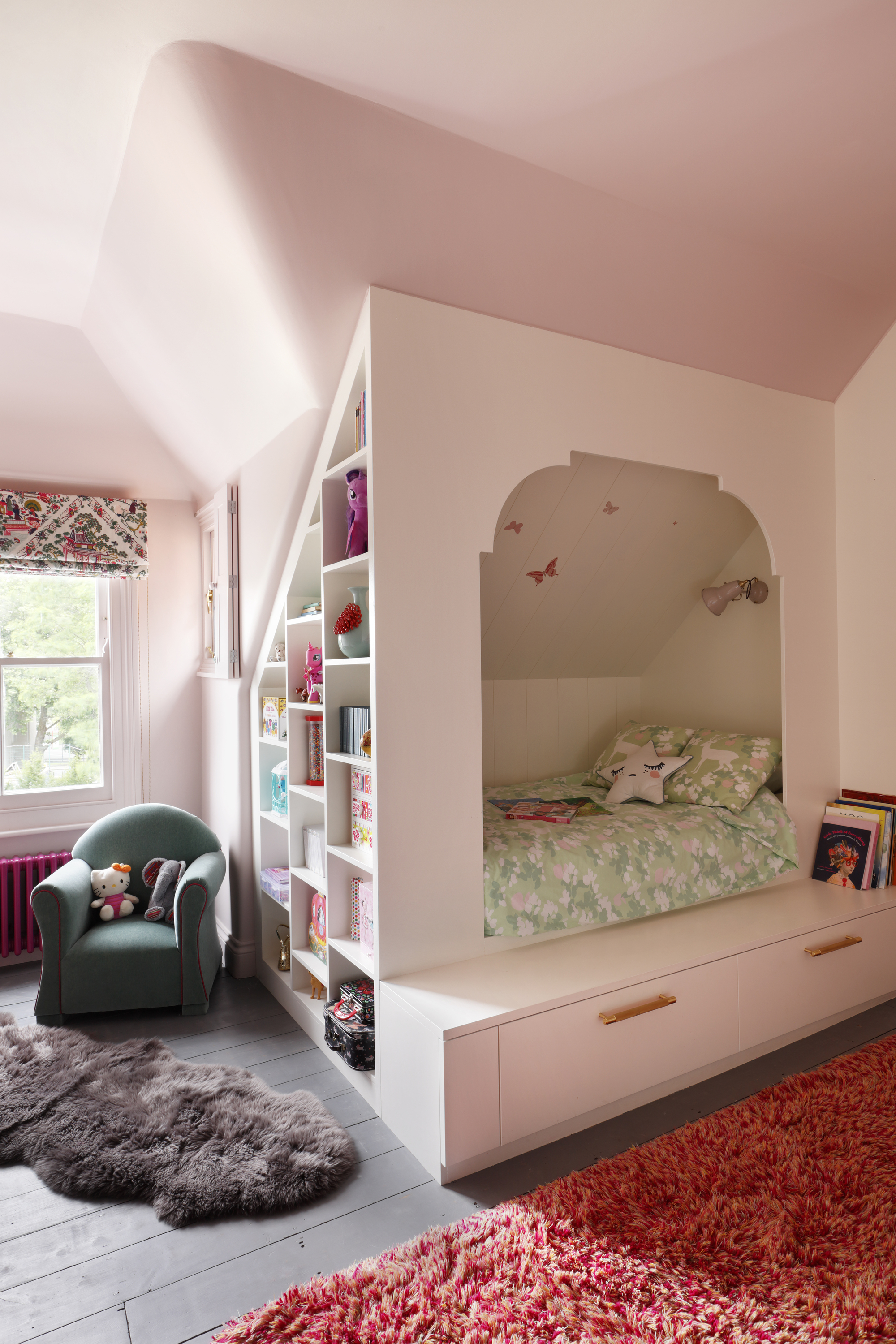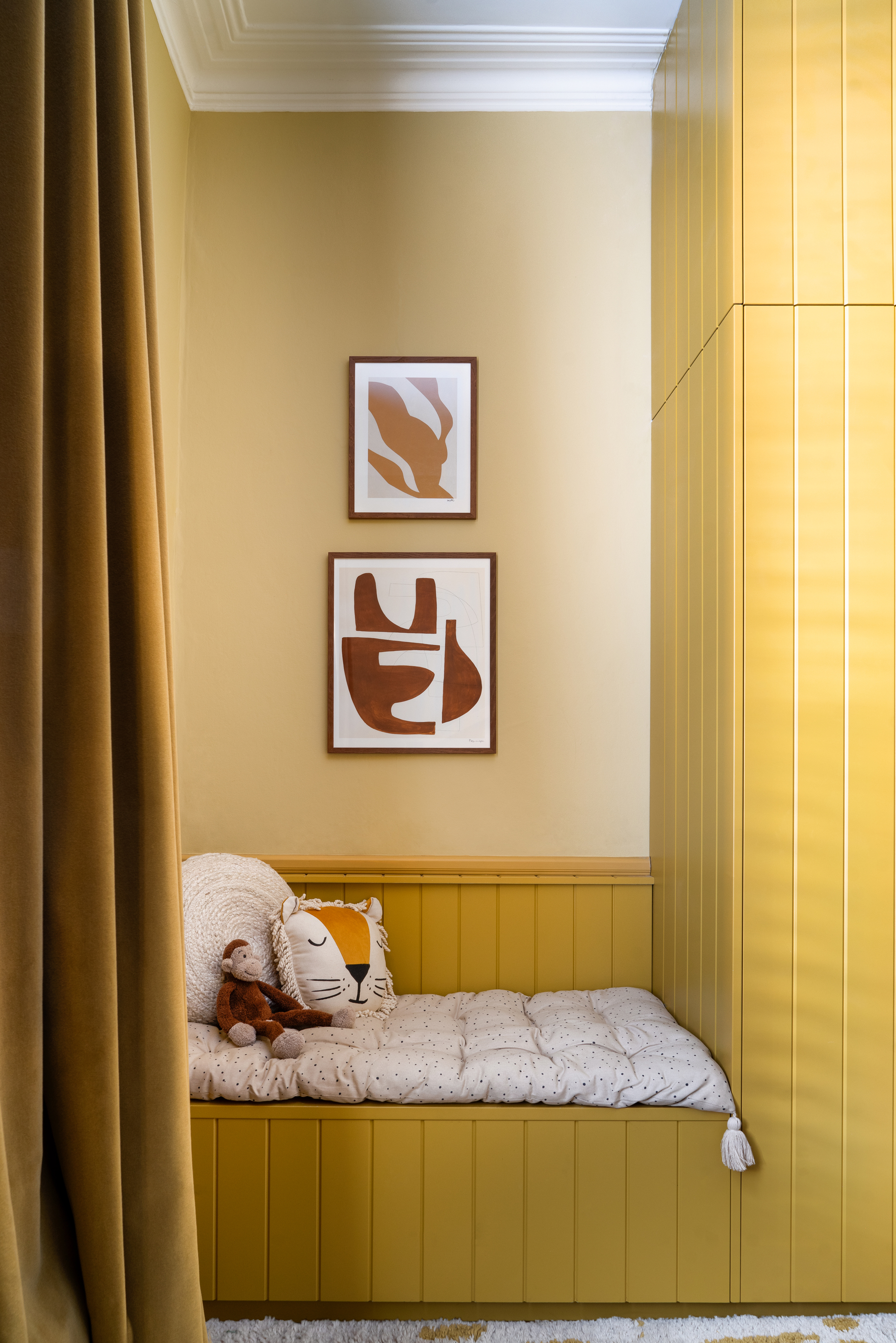5 colors to avoid in a kids' room – the shades to steer clear of, according to color psychology
Give your little ones a peaceful night's sleep by avoiding these paint colors in their bedrooms, say interior designers


If you're in the process of redecorating your little one's room, how your choice of paint color affects their mood should be a big consideration. We usually think of paints as ways to decorate or lift a space, but while hues can inspire and soothe, they can also agitate or distract. And this is particularly true for children.
Kids are prone to being stimulated by their surroundings. Certain colors are known to induce energy and excitement, while others help them calm down. In fact, it isn't as much about the color as it is about its temperature or undertone. While most paint hues work in a kid's room, specific intensities and temperatures may not be ideal.
However, do keep in mind that every child is different; these generalizations don’t apply to all. We asked interior designers for their advice, whether there's any colors to avoid, and how to get these shades right.
5 colors to avoid in a kids' room
'Color psychology plays a major role in impacting the human mind,' say Hardesh and Monica Chawla, founders and interior designers, Essentia Environments. 'Every color has its meaning and connection, that varies across many factors. In the field of design, the color wheel has a universal theory for each color, from mood to its impact.'
'While designing a kid's room, you have to keep in mind five basic factors – sleep, play, layout, color, study, and work,' say Hardesh and Monica. 'This room should be filled with colors, but one has to choose the right shade so that the reflections formed in the room with light and color never blind the eye, or put any stress on it.'
1. Bright purple

Purple or bright purple tends to have red undertones, which means the hue has a high-energy effect, keeping you alert, and thereby making the room less restful. While the hue looks great as a decor option, in a little boy's or girl's bedroom, it can be the enemy sleepiness.
'Purple tends to have an undertone with shorter wavelengths that awaken the brain instead of relaxing it,' say Monica and Hardesh. 'While this might be the first choice for the bedroom, purple, made up of red and blue, has a fluctuating wavelength for the human eye to perceive. Plus, people end up choosing cooler hues as people do not know or understand about color psychology or the science behind it.'
The Livingetc newsletters are your inside source for what’s shaping interiors now - and what’s next. Discover trend forecasts, smart style ideas, and curated shopping inspiration that brings design to life. Subscribe today and stay ahead of the curve.
If your heart is still set on this hue, choose a more muted tone, like soft lavender, because of its cool undertones. You could go for Lite Lavender by Sherwin-Williams or Benjamin Moore's Spring Lilac 1388, for example. Alternatively, make like OAD Interiors, who created this clever scheme with a stripe of purple behind the bed. This keeps it out of sight and out of mind at bedtime, but makes for an energizing space the rest of the time.
2. Bright red

Typically red is a color that evokes emotions of dominance, power, and prestige. But the shade and undertone of red are what matter the most. Phone box red or bright, orangy red can elicit aggression and frustration and can be a volatile kids' room paint color.
'While red is a fantastic color for kids' bedrooms, use it in moderation such as pieces of furniture painted in bright colors or accessories like cushions and posters, avoiding a full wall color in this tone' says Ann Marie Cousins, founder at AMC Design.
'Red will do exactly the opposite of what you want a bedroom to do,' says Joshua Smith, founder and principal designer at Joshua Smith Interior Design. 'It stimulates excessive brain activity and can often make kids feel agitated, and no one should ever go to bed angry.'
Red can do well as an accent tone on cushions, artwork or even on a stand-alone wardrobe. However if you're still looking to paint in this hue, choose terracotta/rust like Morocco red by Behr, or Sundried Tomato by Benjamin Moore that are less jarring.
3. Fluorescents

It's rather easy for parents to think of sugary, bubblegum colors for their kid's bedrooms or shared bedrooms, but a bright, florescent shade can be quite overwhelming, both for the eyes and the mind. 'I particularly advise against the Easter egg hues as they make the bedroom look like a pre-school,' says Jennifer Morris, interior designer, JMorris Design. 'If you have to use these colors, choose their warmer tones.'
'Color is a mood enhancer,' says Kellie Burke, founder and principal designer of Kellie Burke Interiors. 'Fluorescents like yellow or pink are energetic, stimulate the appetite, but tire the eye and can evoke anger and agitation, so let’s keep that color out of the bedroom and settle for something more soothing.'
A few good paint tones to consider are Balsam by C2 Paint or Green 09 by Lick.
4. Bright pink

Pink with brown or grey undertones can elicit tranquillity, and the same can work well in the bedroom. But when it comes to colors to avoid in a bedroom for kids, hot pink should be left for a space that creates more energy, like a playroom.
'Softer colors tend to have a more beneficial effect when it comes to relaxation and sleep, so if possible, avoid bright and overwhelming colors like hot pink in a child's bedroom,' says Ann Marie.
A good alternative to hot pink is one with a light undertone of grey. 'My favorite pink paint color is Farrow & Ball's Calamine. It reads like a neutral, but is better,' shares designer Mary Patton. It's pictured here on bespoke joinery by The London Joinery Company. Another great hue to try out is Opal 891 by Benjamin Moore.
For a little pop of energy, hot pink has been added as an accent on the radiator - a fun detail that won't overwhelm the space.
5. Bright yellow

Yellow is one of the most common colors for a gender-neutral kids' bedroom and is usually associated with feelings of happiness. Many psychological studies point to this color as being bright and cheery, ideal for motivation. In some cases, it is believed that the softer or deeper tones of yellow can aid in concentration. Plus, there are many other colors that go with yellow.
However, beware of using an acidic, or cool yellow in large doses it may create feelings of agitation and even anger. 'It’s all about balance, designing a space that feels playful and fun to play in, but also calm enough to sleep,' says interior designer Emma Shone-Saunders of Design & That. 'Getting the color right key - yellow is a bright and cheerful colour, but a soft yellow can also very soothing.'
Try layering in shades of cream or white for some softness and contrast. Plus, add soft, cuddly textiles in the room for comfort. A good alternative for acidic yellow is a dusty yellow like Farrow & Ball's Hay or muted gold like Benjamin Moore's Inner Glow.
What are the best colors for kids' bedroom?

Before you look at a shade card and start selecting paint colors for the kid's bedroom, remember to keep temperatures and undertones in mind. 'The temperatures or undertones to avoid are more linked to the orientation of the room rather than the room use itself,' says Ann Marie. 'It feels like an obvious thing to focus on, but it is the one thing you can’t change to allow for warmer colors in north-facing rooms and keep the light and airy color schemes to south-facing rooms.'
'Whichever way it faces, the room needs to have some calm to it, so even when designing for small children who respond well to bright colors, keeping a calm and soothing base is important, and keeping vibrant colors to accents is the best way to ensure that small people aren’t too energetic at bedtime,' says Ann Marie.
When it comes to picking tones for a kid's room or even a teenager's room, it's not entirely a bad idea to go for perceived 'grown-up colors' as they give the room longevity and help you avoid redecorating through the growing years. 'Smart, deep greens or moody, smoky blues such as De Nimes are a great choice,' says Patrick O'Donnell, Farrow and Ball's brand ambassador.
'Warm neutrals, those with a little red or yellow through them, allow to effortlessly layer all other fun elements into space, from brightly colored linen to pops of color on a painted bed,' says Patrick. 'Archive is a warm stone shade that will soften a room, even if starved of much natural light.'

Aditi Sharma Maheshwari started her career at The Address (The Times of India), a tabloid on interiors and art. She wrote profiles of Indian artists, designers, and architects, and covered inspiring houses and commercial properties. After four years, she moved to ELLE DECOR as a senior features writer, where she contributed to the magazine and website, and also worked alongside the events team on India Design ID — the brand’s 10-day, annual design show. She wrote across topics: from designer interviews, and house tours, to new product launches, shopping pages, and reviews. After three years, she was hired as the senior editor at Houzz. The website content focused on practical advice on decorating the home and making design feel more approachable. She created fresh series on budget buys, design hacks, and DIYs, all backed with expert advice. Equipped with sizable knowledge of the industry and with a good network, she moved to Architectural Digest (Conde Nast) as the digital editor. The publication's focus was on high-end design, and her content highlighted A-listers, starchitects, and high-concept products, all customized for an audience that loves and invests in luxury. After a two-year stint, she moved to the UK and was hired at Livingetc as a design editor. She now freelances for a variety of interiors publications.